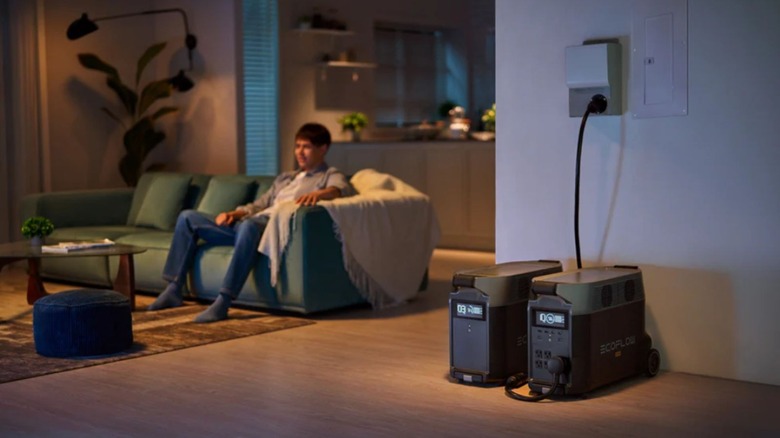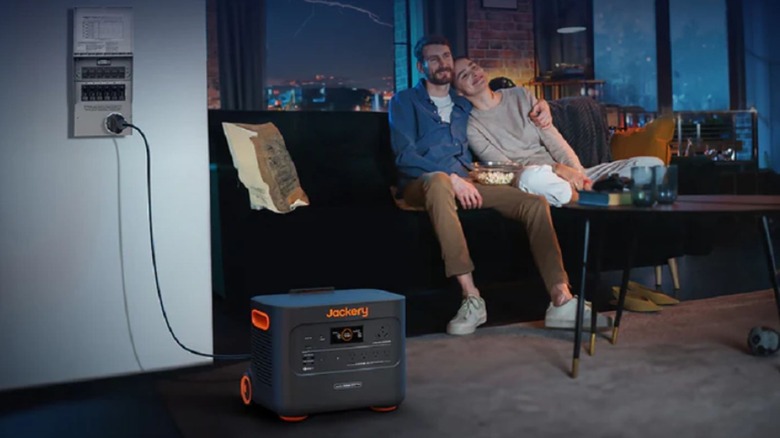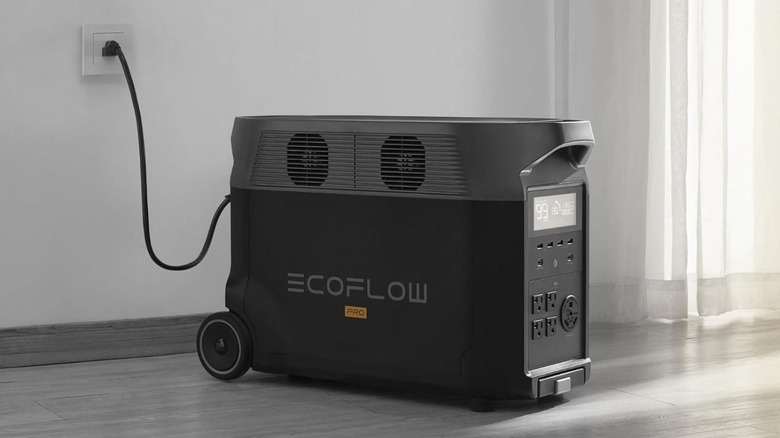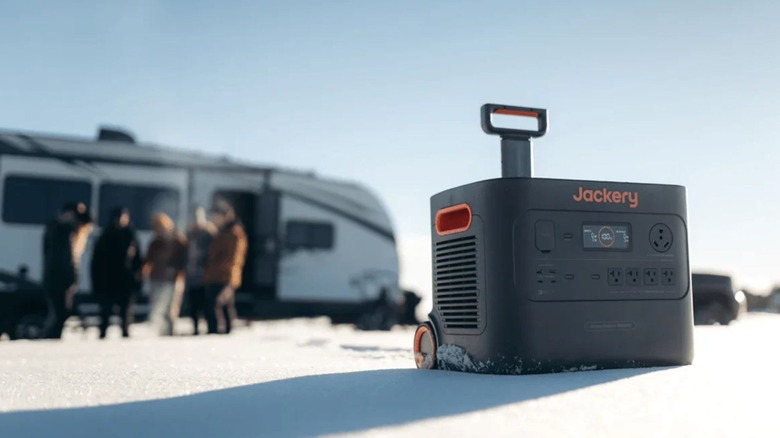Jackery Explorer 3000 Pro Vs. EcoFlow Delta Pro: How Do These Power Stations Compare?
We may receive a commission on purchases made from links.
According to the U.S. Department of Agriculture, your refrigerator will keep food safe for only up to four hours during a power outage. That's only if you don't open the door to grab water or a snack. Years ago, you'd have to rely on a portable gas-powered generator to power your appliances in an emergency, but the advent of the portable electric power station changed the game and made it quite a bit safer and more convenient. Their growing popularity also blossomed dozens of options, like Jackery's Explorer 3000 Pro and EcoFlow's Delta Pro.
Between the two, their physical appearance is relatively similar. Beyond their varied shapes and plug configurations, you could guess that the two power stations perform similarly. However, portable power stations can be built for different things. From different battery sizes to a deviation in the number and types of plugs available, one station may be better built for outdoor adventures and another for at-home power outages.
By comparing the battery capacity, available inputs and outputs, power ratings, and compatibility of the Jackery Explorer 3000 Pro and EcoFlow Delta Pro, you can better gauge which unit would best serve your needs. Note that these stats won't speak to either unit's quality, just how their specs measure up to one another.
Understanding battery capacity
Battery size, or capacity, is one of the most important numbers to know before buying a portable power station. This will tell you how much you can power and for how long you can power it. Since this is such a significant number, you really need to know how the portable power station's battery capacity relates to the devices you're planning on powering with it. For a power station, most batteries are rated in watt-hours (Wh), where 1Wh equals one watt used every hour.
The math is fairly simple: Just divide the battery's watt-hours by the total wattage the appliance uses. For example, a 3,000Wh battery capacity can power a 300W device continuously for around 10 hours. Some batteries are also rated in milliamp-hours (mAh), which you can convert to watt-hours by dividing the volts used by 1,000 and then multiplying the result by the milliamp-hours. It's much easier to work in watt-hours since virtually all appliances are rated in watts.
Power specs of the Jackery Explorer 3000 Pro
Per the official Jackery listing, the Explorer 3000 Pro boasts a battery capacity of 3,024Wh. You can distribute that across two 18W USB-A, two 100W USB-C, four 120V 20A AC, and one 120V 25A AC ports. There's also a 12V 10A DC car adapter port should you need to power your car. The unit's AC output wattage tops out at 3,000W or can be surged to 6,000W. Hidden on the back of the unit is a 120V 15A AC input for the most efficient charging method and two 8020 DC ports for either charging with your car or solar panels.
According to Jackery, the power station should fully recharge in 2.4 hours via the AC wall charger or up to 7.5 hours using six of the SolarSaga 100W solar panels. Using a more conservative setup of one 200W panel, the 3000 Pro will recharge within 20 hours. As with any sizable portable power station, a car charger is best reserved for emergency situations as it has a considerably slower charge speed at 35 hours.
Power specs of the EcoFlow Delta Pro
The EcoFlow Delta Pro offers a little more battery life, with a capacity of 3,600Wh. Using EcoFlow's Delta Pro Smart Extra Battery, you can increase that amount in increments of 3,600Wh up to 25,000Wh. Due to its expandability, with Extra Batteries, the EcoFlow Delta Pro can run larger, more power-hungry appliances like an HVAC system, which can consume upwards of 4,000W.
When it comes to ports, it's not too dissimilar from Jackery's Explorer 3000 Pro. Its five AC outputs can produce 3,600W total or 7,200W when maxed out at a 240V surge, and it also features two 38W DC outputs. Like the Jackery station, the Delta Pro has two standard USB-C and two 18W fast-charging USB-A ports but also has two basic 12W USB-A ports. According to EcoFlow, the Delta Pro can charge from a wall outlet in 2.7 hours at 1,800W using X-Stream fast-charging technology. Using EcoFlow's 400W solar panel, four will bring the Delta Pro to 100% in 3.5 hours.
How portable is each power station?
The power specs of a portable power station are only one factor. Another is just how portable each unit is. After all, a portable power station should be movable without much hassle. The Jackery Explorer 3000 Pro station weighs just under 64 pounds and measures 18.6x14.1x14.7 inches. In terms of portability, it features two wheels at its rear, a pair of handles molded into each side, and an extendable arm built into the back.
EcoFlow's Delta Pro portable power station weighs just under 100 pounds and measures 25x11.2x16.4 inches, making it quite a bit larger than the Jackery Explorer 3000 Pro. It, too, has an arm that extends from the bottom of the unit so it can be pulled on its two rear wheels. The unit also has large, molded handles to move the station short distances. As a larger, heavier unit, the EcoFlow Delta Pro is less convenient for camping and powering outdoor appliances.




